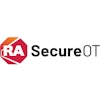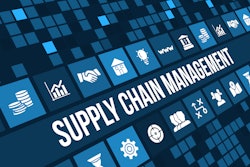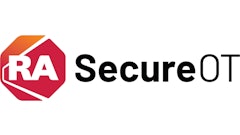
From new speed limit rules and electronic logging device (ELD) requirements to stricter drug and alcohol testing compliance, trucking industry regulations continue to change. For many industry-leading companies, it is no longer enough to simply be informed about the ever-changing rules of the road. Instead of relying on for-hire carriers, they are taking compliance into their own hands by starting or transitioning to a private fleet. With more control over their transportation operations, these companies can take the following proactive measures to ensure their private fleets meet federal, state and local requirements.
Recruiting and retaining the most qualified and experienced drivers
Private fleets have more stringer screening and hiring processes for truck drivers compared to for-hire carriers. Many require their drivers to have experience behind the wheel and demonstrate a history of safe driving practices. In addition to being more likely to meet Department of Transportation (DOT) requirements, these drivers are also in the habit of adhering to regulations such as hours of service (HOS) and proper vehicle maintenance.
High-quality drivers also tend to seek out and stay with private fleets. Because many offer higher pay and more stable and predictable work environments, private fleet jobs are attractive to the most seasoned drivers with the best safety records.
Providing comprehensive driver training and ongoing education
For many private fleet drivers, training does not end after orientation and onboarding. They attend regular meetings to keep up with changing regulations and stay on top of safety procedures and protocols. An extensive network of safety managers and supervisors ensures they receive continuous in-person support. Some are routinely put through mock DOT inspections as well as examinations that simulate regulatory compliance initiatives like the Commercial Vehicle Safety Alliance (CVSA) International Roadcheck. These mock inspections include thorough evaluations of the cab, body, chassis and tires of trucks as well as the credentials, appearance and behavior of drivers.
Because private fleets have direct oversight and control over their drivers, equipment and routes, they can tailor driver training programs to their specific needs and goals, including complying with regulations. For drivers operating in the hottest parts of the country, they can emphasize tips to ensure proper hydration and prevent vehicles from overheating. If certain delivery locations are difficult to back into, reminders to “get out and look” can be sent to drivers’ in-cab devices upon arrival.
Instilling a culture of safety
With only 0.52 accidents per million miles, private fleets boast a DOT recordable accident rate that is three times better than the trucking industry average, according to the 2024 National Private Truck Council (NPTC) Benchmarking Survey Report. Low accident rates indicate safer operations, which are often achieved through adherence to regulations and safety protocols.
Private fleets foster a culture of safety through a variety of initiatives, including structuring driver compensation plans to include payment for performing pre- and post-trip inspections. Incentivizing drivers to take the time to identify issues with their vehicles before and after each trip can help ensure that trucks meet safety standards and avoid violations. To further encourage safe driving behavior, many private fleets also have programs that recognize and reward drivers for excellent safety records.
Engaging in preventative maintenance and regular inspections
Companies running their own private fleets are incentivized to make sure their vehicles and equipment are in good working order. Meeting safety standards and complying with regulations can prevent unexpected downtime and expensive repairs that can directly impact companies’ operations and bottom lines.
Using the latest technology
Because they own their equipment and manage their drivers, companies with private fleets can freely implement the latest technology to aid in compliance. ELDs help ensure that drivers follow HOS regulations by automatically recording their duty status and providing a digital record that DOT inspectors can easily audit. Collision mitigation systems, cameras and telematics can be used to detect and correct unsafe driving behavior that could lead to violations. Predictive maintenance gathers data from truck sensors and algorithms to anticipate when trucks require repairs. A variety of tools automate data collection and storage, which makes it easier to access and maintain compliance-related information.
Despite the upfront cost, private fleets are known for being early adopters of trucking technology because it reduces costly accidents and fixes, resulting in long-term savings.
Advancing sustainability initiatives
Federal regulations aimed at decreasing carbon emissions and promoting fuel efficiency are putting increased pressure on shippers to make their operations more sustainable. One Securities and Exchange Commission rule finalized in March 2024 requires some companies to report climate-related information such as greenhouse gam emissions in their annual reports and registration statements.
To gain more control over their emissions—and ensure they follow environmental regulations—numerous companies have started or expanded their private fleets. For example, one online marketplace's goals motivated its move from shipping with for-hire carriers to forming its own private fleet sector. The private fleet has employed several different technologies to meet its sustainability targets, including battery-electric vehicles, renewable natural gas and hydrogen fuel cells. In addition to having the autonomy to leverage technology, private fleets can also optimize their routes to minimize mileage and idling time, further reducing fuel consumption and emissions.
In an industry where compliance can make or break operations, private fleets offer a clear advantage. With complete control over drivers, equipment and safety protocols, companies can quickly respond to regulatory changes, reduce risks and maintain higher standards across the board.



















